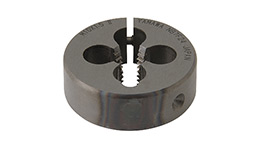
Dec . 04, 2024 16:43
Back to list
Understanding the Functionality and Applications of Pneumatic Valves in Industrial Systems
Understanding Pneumatic Valves The Unsung Heroes of Automation
Pneumatic valves are essential components in various industrial applications, particularly in the field of automation and control systems. These devices play a crucial role in directing the flow of compressed air within a pneumatic system. By allowing or restricting airflow, pneumatic valves control the actuation of pneumatic cylinders and other devices, thus facilitating the automation of numerous processes.
What Are Pneumatic Valves?
Pneumatic valves are mechanical devices that regulate air flow in pneumatic systems. They are responsible for controlling the movement of actuators, which convert compressed air into mechanical energy to perform tasks such as lifting, pressing, and moving materials. Generally made of metal or plastic, these valves come in various configurations and sizes to suit different applications.
Types of Pneumatic Valves
1. Directional Control Valves These valves manage the direction of airflow within a system. They can be single-acting or double-acting, which determines whether the valve allows air flow in one or both directions. Common examples include 2-way, 3-way, and 4-way valves. A 5/2 valve is often used in double-acting cylinders, while a 5/3 valve can manage multiple functions or actuators.
2. Flow Control Valves As the name suggests, flow control valves regulate the speed of airflow within a circuit. They can be adjusted to control the position and speed of actuators, ensuring that tasks are performed at the desired rate. This ability to modulate flow is crucial in applications where timing is critical.
3. Shuttle Valves These valves are used to switch between two pressure sources. They allow for redundancy in pneumatic systems, ensuring that if one source fails, the system can still operate on another, thus enhancing reliability.
4. Check Valves These valves prevent backflow in a system. By allowing air to flow in one direction only, check valves protect downstream components from potential damage caused by reverse flow.
5. Solenoid Valves These are electrically operated valves that utilize electromagnetic coils to open or close the valve. Commonly used in automation applications, they can be controlled by timers, sensors, or programmable logic controllers (PLCs).
pneumatic valve

Working Principles
Pneumatic valves work on the basis of pressure differences. When the differential pressure across the valve changes, it either opens or closes the flow path. In solenoid valves, an electric current passes through a coil, creating a magnetic field that moves a plunger to open or close the valve. In mechanical valves, physical action, such as pushing a lever or pressing a button, controls airflow.
The choice of pneumatic valve depends on several factors, including the application’s requirements, the medium being used, and the desired response time. Proper selection is vital, as it impacts the efficiency and effectiveness of the overall pneumatic system.
Applications of Pneumatic Valves
Pneumatic valves are widely used in diverse fields, including manufacturing, packaging, material handling, and automotive industries. For instance, they are essential in robotics, where they control the movement of robotic arms. In the food and beverage industry, pneumatic valves enable automated filling and packaging processes, maintaining hygiene and efficiency.
Moreover, air brakes in heavy vehicles utilize pneumatic valves to control braking action. In mining, these valves are integral to the operation of pneumatic tools and equipment, allowing for heavy-duty tasks without the risk of electric hazards.
Importance of Maintenance
Like any component in an industrial setting, pneumatic valves require regular maintenance to ensure their longevity and optimal performance. Common maintenance practices include inspecting for wear and tear, checking for air leaks, and ensuring that the actuators respond correctly. Preventive maintenance not only extends the life of these valves but also reduces downtime, improving overall productivity.
Conclusion
Pneumatic valves may not always be in the spotlight, but their role in modern automation cannot be overstated. From controlling the flow of air to actuating complex machinery, these valves are vital to ensuring processes run smoothly and efficiently. As industries continue to evolve and embrace automation, the importance of reliable pneumatic valves will only grow, making them indispensable in the quest for operational excellence.
Next:
Latest news
-
Safety Valve Spring-Loaded Design Overpressure ProtectionNewsJul.25,2025
-
Precision Voltage Regulator AC5 Accuracy Grade PerformanceNewsJul.25,2025
-
Natural Gas Pressure Regulating Skid Industrial Pipeline ApplicationsNewsJul.25,2025
-
Natural Gas Filter Stainless Steel Mesh Element DesignNewsJul.25,2025
-
Gas Pressure Regulator Valve Direct-Acting Spring-Loaded DesignNewsJul.25,2025
-
Decompression Equipment Multi-Stage Heat Exchange System DesignNewsJul.25,2025

